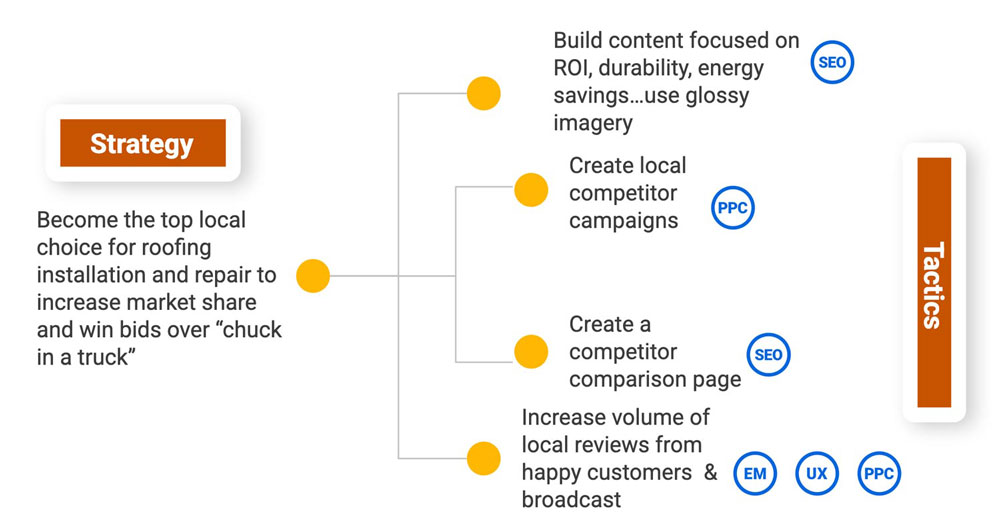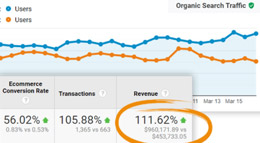Strategic Storytelling: How to Build Narratives That Drive B2B Marketing Success

Marketers love data. Research published in Harvard Business Review shows that facts are up to 20 times more memorable when delivered through a story. Data alone only takes you so far. That’s why the most effective marketers have mastered the art of storytelling.
That’s the power of strategic storytelling: it transforms campaigns into something human, relatable, and actionable. The key isn’t just telling a story—it’s telling the right story, with clear intent, aligned to business goals, and rooted in data.
Consider Dell Technologies’ “I.T. Squad” campaign. Based on customer data, the brand found that customer skepticism about IT vendors was on the rise. To counter this, Dell tapped into real Reddit threads and turned them into a comedic video series. By grounding their message in authentic user pain points and humanizing IT challenges through relatable characters, they built trust with decision-makers and generated strong business results.
The lesson? Strategic storytelling isn’t a nice-to-have—it’s a framework that helps B2B brands create campaigns, blogs, case studies, and other compelling marketing content. Here’s how to apply it.

The Strategy Storytelling Arc
A compelling B2B marketing narrative starts with context. Data without a story is just numbers—data with context shares why something increased or decreased, what obstacles exist, or how metrics connect to business goals. First, we start with business insights to find our story.
Here we are using a strategy storytelling arc to guide us. To start your arc, think about your audience and ask:
- What are their top growth goals right now?
- Who are their competitors, and why do buyers choose them?
- What challenges stand in their way?
Answering these questions reveals the stakes, conditions, and conflicts that make your story meaningful. These business insights are chapter one, and to see this action, let’s pretend we are creating a campaign speaking to roofing businesses.
Our Audience’s Business
Revenue is under pressure year-over-year, with growth hinging on expanding high-margin product lines and increasing qualified lead flow. Competitors are competing on price thanks to the “Chuck in a truck” model, informal operations with cheaper materials. Your client’s advantage lies in quality, reliability, and customer service.
About Their Industry
The roofing sector is facing volatility—tariffs are raising material costs, supply chain disruptions remain a factor, and demand growth is uneven across regions. While national projections show steady expansion, localized competition is intensifying.
About Their Customers
Their buyers are residential homeowners aged 35-65 who have lived in their homes for 10+ years, with purchase drivers such as protection, safety, curb appeal, energy savings, and want long-term payoff.
Now your data points answer the who, what, where, when, and why of your story. You’re setting the stage for a strategy that connects to buyer motivations and is ready to make an impact.
Frame the Challenge and Paint the Desired Future
Every great story has conflict. In marketing, that means clearly defining the business challenge and showing what success looks like.
For B2B clients, that could be shrinking margins, aggressive new competitors, or shifting buyer expectations. Frame the challenge in a way that stakeholders feel the urgency—then paint the vision of a better outcome.
When prospects and decision-makers see both the pain and the potential, they lean in to hear how your solution creates the “happy ending” (i.e., the business outcomes your client is looking for). Take our roofing example:
Business Challenge
Revenue is suffering as more roofing competitors enter the market, or what we call “Chuck in a truck” companies. Local demand is flat, but the price of services is increasing due to rising material costs. So customers are feeling that pain and flirting with “the Chuck’s” lower cost, lower quality options.
Desired End State
We help gain local market domination for our client by communicating to homeowners that you are a roofing partner with a long history of quality to get their best return on investment. You don’t want just any roof over your head, do you?
With your challenge and desired end state in hand, you’ve bookended the story. The audience is eager to hear your strategy on how to beat out “the Chucks”.
Apologies to any readers named Chuck.
Differentiate Strategy from Tactics
One of the biggest mistakes in B2B marketing is confusing strategy with a checklist of activities. Strategy is the what and why. Tactics are the how and when.
By separating the two, you give your story structure. The strategy is the plot; the tactics are the scenes that move it forward.
So, taking our roofing company’s challenge, we present a strategy: Become the undeniable top local choice for roofing installation and repair to increase market share and win bids over “Chuck in a truck”. Then we present the how and when with tactics.

Strategy and tactics for our roofing business audience.
Make It Tangible With Examples and Outcomes
Buy-in grows when stakeholders see accountability. Don’t just promise results—show them. Tie the impact to the metrics that matter most in B2B contexts: qualified leads, revenue growth, customer retention, and brand sentiment. How can your offerings move the needle in these areas?
For instance, consider a roofing company competing with low-cost providers. Instead of relying on abstract claims about “quality,” the story becomes tangible when framed in terms of outcomes: a higher-quality roof lasts 20+ years with minimal repairs, while a cheaper option may need to be replaced within a decade—costing homeowners more in the long run.
That same approach applies across B2B industries. Abstractions don’t persuade—outcomes do. Share relevant examples, case studies, or modeled projections that bring the story to life and demonstrate exactly how your strategy drives measurable value.
Bring Your Story to Market
A strong narrative shouldn’t stay in a strategy deck—it should live where your audiences engage. Turn your stories into case studies that build credibility, weave them into website copy that speaks to buyer pain points, and adapt them for ad campaigns, email sequences, and sales presentations. By repurposing your strategic story across multiple channels, you ensure consistency, amplify impact, and keep your brand message memorable at every stage of the buyer journey.



